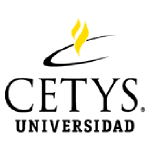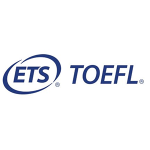Virtual International Partnerships (VIP) Program
The purpose of this program is to match a faculty member from a CONAHEC member institution with one or more faculty members at another CONAHEC member institution in a second country who, as a pair or group, will collaborate in the design and teaching of part of or a complete course using information technologies and collaborative online course development methodologies. In ideal circumstances, we’ll attempt to match a third faculty member from a third country to create a trilateral collaboration. Although this program is designed to pair very well with CONAHEC’s Short-Term Faculty Exchange Program, in the case of our VIP program, there is no expectation that participating partners will physically travel to one another’s institution/country. Each professor will be expected to collaborate with the partner to plan, design, and organize a virtual activity through which they offer their respective students the opportunity to interact and collaborate with their partner’s cohort of students.
Expected Outcomes:
Students at each participating institution will be exposed to some of the content, analysis, teaching methodology and classroom interactions from the partner professor’s institution. This process will contribute to the internationalization of the curriculum, promote joint teaching activities, open doors to possibilities for subsequent collaboration with partner professors and with other academics at the other institution. Implemented strategically, participation in this program can create ongoing international engagement, collaborations that become deeper and more academically meaningful over time, and can create pathways for students to engage in life changing international academic work. Over time this can also establish trust among professors their departments and institutions, and can result in the institutionalization of collaborations in the form of collaborative degree program offerings, faculty led semesters abroad, student study abroad, etc.
How it works:
Interested CONAHEC member institution representatives will be responsible for reaching out to the faculties and schools within their own institution to identify and encourage faculty members interested in participating. Interested faculty members should complete and submit the Academic Profile Builder form on the CONAHEC website. In addition to personal contact information, this Academic Profile Builder form can be revisited periodically to chronicle academic production in terms of publications, courses taught, academic interests, ideas for future projects etc. The more complete the profile provided, the more easily CONAHEC staff and institutional contacts can find potential partners for international collaboration projects. Joint proposals from universities who wish to collaborate are encouraged, in which case the respective faculty members in question are encouraged to complete the Academic Profile Builder form identifying their partner faculty member and institution at that time so that the match can be formalized within the CONAHEC program. CONAHEC will use submissions through the Academic Profile Builder system to identify potential partners and will notify them and their respective institutional contacts to initiate exploratory conversations. Please note that suggesting a potential partner faculty member or partner institution will considerably increase CONAHEC and our institutional contacts’ chances of helping faculty members initiate a partnership through the program. The group of collaborating faculty members will design the elements of the course syllabus involved in the collaboration and the timelines and activities to be implemented during the course/semester in question. A preliminary timeline, academic and collaboration plan will be shared with CONAHEC program staff as the initial required deliverable. Selected faculty members will work together leading up to the semester in which their collaborative module(s) or course(s) will be implemented to ensure that students and partners receive a valuable contribution through the collaboration. Each respective partnering faculty member will then participate in the collaboratively taught elements of the virtual international partnership during the semester following the one in which the match was established. Any delays or changes to the timeline and plan will be communicated to CONAHEC. As mentioned, this program is intended to pair with CONAHEC’s Short Term Faculty Exchange Program and as such participating faculty members are encouraged to submit proposals that involve short-term international visits to their partner’s institution in the event that program is also of interest. If so, please refer to the guidelines provided on the Short-Term Faculty Exchange Program page. We encourage participating faculty to periodically revisit and update the Academic Profile Builder system to keep us apprised of this progress.
Partners are expected to complete the following tasks:
Before the Visit:
CONAHEC and/or the CONAHEC member’s institutional coordinator introduces a potential match to faculty the member. Faculty members proposed as a potential partnership are expected to establish communication to have an initial exploratory conversation. If the partnership will go forward, this fact is to be communicated to CONAHEC and the respective CONAHEC member institutional representatives. After the partnership is confirmed, faculty members are expected to establish ongoing periodic communication to cooperatively identify and agree on the scope and activities planned for the collaboration. As part of the planning exercise, please be aware that all activities undertaken should be chronicled for inclusion in the reports. Collection of evaluation surveys from students, participating faculty and CONAHEC member institution representatives should also be foreseen. In addition, please advise students that testimonials will be requested so they can attest to the academic and personal value of the experience. A completed planning activity document should be sent to CONAHEC before the end of the semester prior to the one in which the visit will take place.
During the Semester of Implementation:
(each professor is expected to participate in all classes in which their own students are present together with the partner institution’s representative):
- Virtual visiting professors will collaborate to teach/co-teach the classes (the professor of record retains that status for the entirety of the course in question).
- Arrangements can be made for the virtual visiting professor to offer a presentation in his/her area of expertise open to the academic or larger community.
- Arrangements can be made for the virtual visiting professor to meet with representatives of appropriate academic departments at the international institution to discuss potential subsequent collaborative initiatives.
- Virtual visiting professors are highly encouraged to participate in a community outreach activities facilitated by their international partner’s institution if conditions allow.
- Partnering professors will organize an online/virtual activity to offer their respective student cohorts at their home institutions the opportunity to interact with the other professor’s cohort of students. This activity could take place anytime and as frequently during the semester as the course design permits and in some cases has lasted the duration of the semester.
After the Semester of Implementation:
- Professors are expected to complete the CONAHEC Virtual International Partnerships Program Evaluation Survey and administer it to their own cohort of students.
- Each professor will submit a final report to CONAHEC by the end of the semester.



